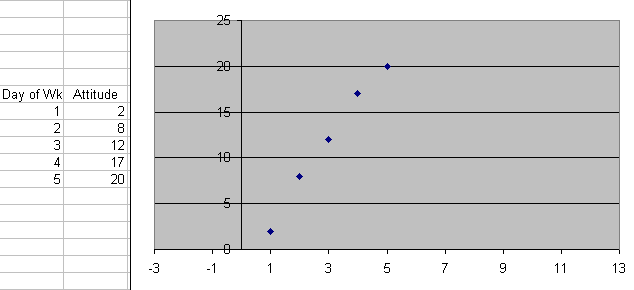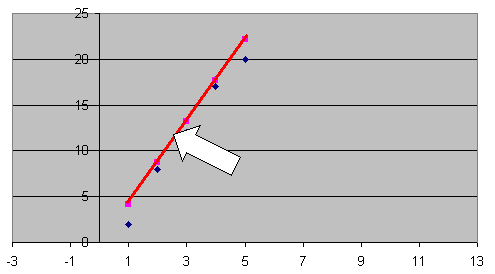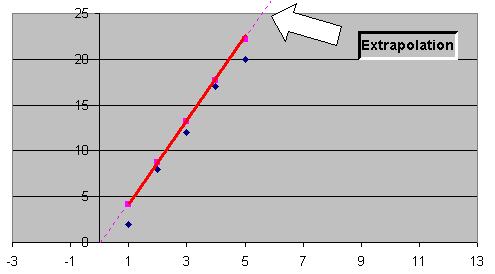
Even with good laboratory data on the toxicity to laboratory animals, we will always have two big sources of uncertainty, frequently called extrapolations. The first extrapolation is the slope factor we just discussed. Let's look at that kind of extrapolagion a little closer.

Here we have measured the attitude, on a scale of 0 to 25, of a college student each morning at 8 AM , Day 1 is Monday and so on. Next we use a linear regression program to find a line that is the best fit of those data points. Now if we want to estimate the student's attitude for 8 PM on Tuesday, we use Day 2.5 as the independent variable and locate the corresponding attitude as 12. This is an example of interpolating between data points. Do you think this particular interpolation will give you an adequate estimate of the student attitude at 8 PM

Scientists and engineers use interpolations every day. An extrapolation, on the other hand, is an extension of the data beyond its range.

We might use an extrapolation of the data to estimate the student's attitude on Saturday night. The extrapolation would indicate the attitude would be around 25, the best attitude all week. Of course the student might be studying that weekend and have a poor attitude on Saturday night. Or we might extend the extrapolation to day 8, the Monday of the following week and estimate that the students attitude would be far better than last Monday.
While estimating attitude seems unscientific, that is because we intuitively realize that the attitude is the product of complex processes that are not obvious to the observer. Unfortunately this is also true with much toxicology. While the dose might be measured to the microgram and the response, especially if its something simple like death, can be observed very accurately, what we are observing is in fact the summation of the reactions of hundreds of biochemical process, most linked together with various feedback control loops. It is easy to scribe a straight line and extrapolate, but the predictions based on it are guesses, not verified fact.